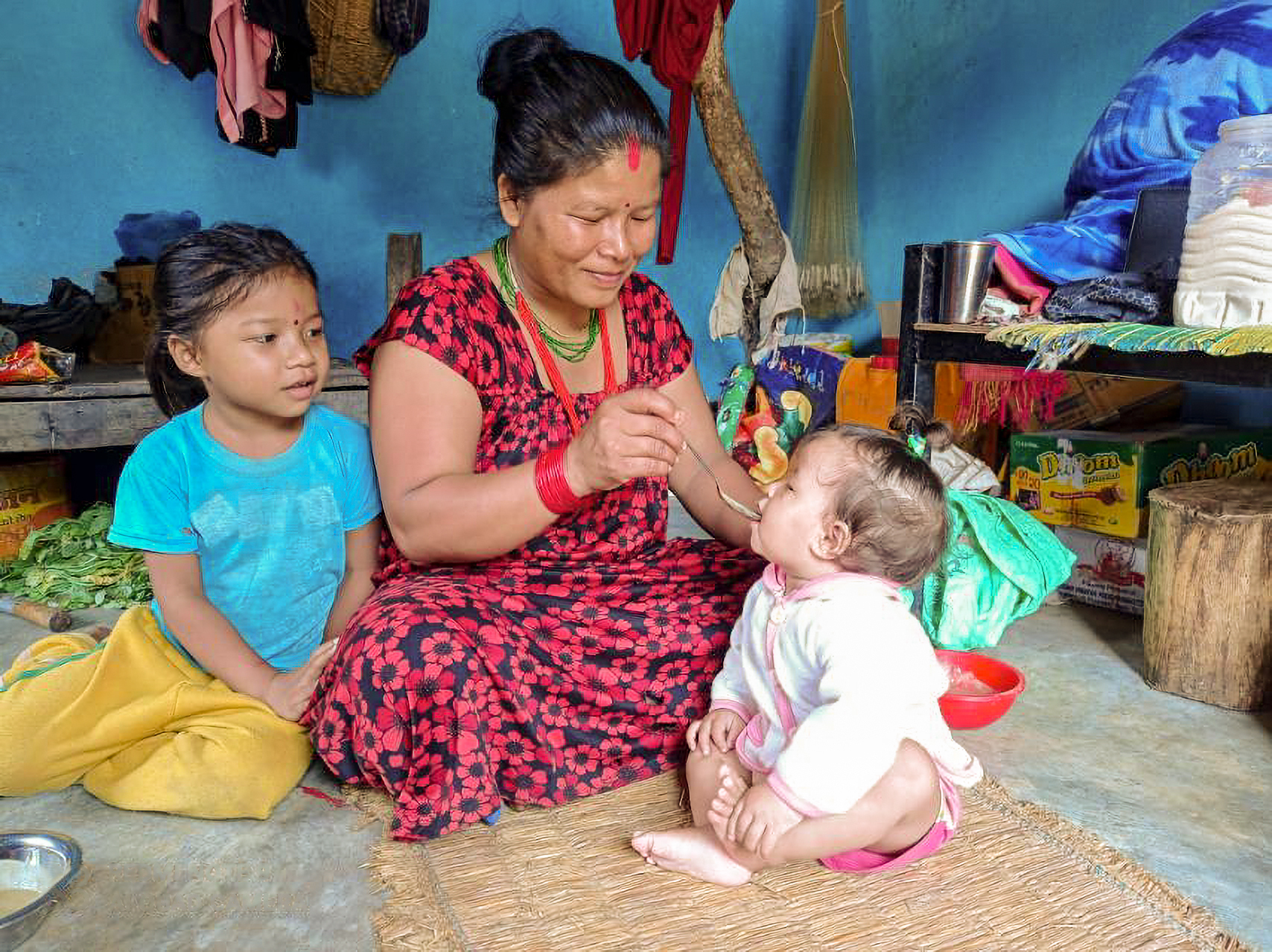Super flour saves the day for children in Nepal

There’s a jar on a kitchen shelf in Sumitra Chepang’s kitchen that has a secret identity. By all outward appearances, it may appear to be just a jar of mild-mannered flour, but under the lid is something much more spectacular—super flour!
And while this super flour isn’t wearing a cape, it is changing the lives of thousands of young children in Nepal.
Chepang lives in a rural village called Syammaidada not far from the capital city, Kathmandu. Her family’s regular income came from selling produce, but pandemic restrictions have eliminated their ability to bring it to market. Without that regular income, her family—Chepang, her husband and their six children—often didn’t have enough to eat.
Food insecurity is a major issue in Nepal, especially the rural areas, with nearly 40% of kids under five having their growth stunted due to malnutrition.

But donors like you have empowered an MCC partner, Shanti Nepal, to help.
Through MCC’s account at Canadian Foodgrains Bank, Chepang was given a supply of pre-made super flour to ensure her children were getting the nutrients they need to grow healthily. But it’s more than just a delivery service. Shanti Nepal also taught her how to make super flour herself.
“I used to make simple rice flour to feed my young children,” says Chepang. “I was not aware about eating a balanced diet, but now I learned about eating three food groups in a meal. I also learned to make super flour, kitchen gardening and healthy behaviors.”
Super flour is a catch-all term for a blend of flours from grains, pulses (seeds from legumes) and proteins. It’s loaded with the calories, protein, calcium and iron that young children need and it’s easy to make, store and prepare. The super flour Chepang makes is a combination of corn, wheat and soybean that she roasts and grinds herself before storing.

If she adds water—or heated milk for her older kids—to the super flour, she can easily make a tasty super porridge that doesn’t require any additional cooking. She says her kids love the super porridge because it’s so versatile and her 10-month-old Promisa has been eating it since she turned six months old.
“It tastes mild without adding other flavor,” says Chepang, 35. “But I make it in different tastes adding sugar or salt and leafy vegetables or fruits based on the season and availability. Promisa wants to change the taste often.”
Super flour’s adaptability and ease of storage has helped thousands of children in Nepal achieve healthy growth and a nutritional balance they might not have achieved without it.
Shanti Nepal’s recipe for super flour
- 2 parts soybeans
- 1 part wheat
1 part rice (or maize, depending on availability)
Dry roast (no butter or oil) each ingredient separately then grind to make a fine flour. Mix all three types of flour together well and store in a clean jar with a tight lid on it.
Preparing super porridge: Mix the super flour in water that’s been boiled and has cooled slightly, stirring it so that it becomes fine porridge. For slightly older children, use milk if available instead of water and it can be eaten instantly. Add sugar or salt as preferred by the child. Fruit chunks or garden vegetables can be added if available and preferred.

